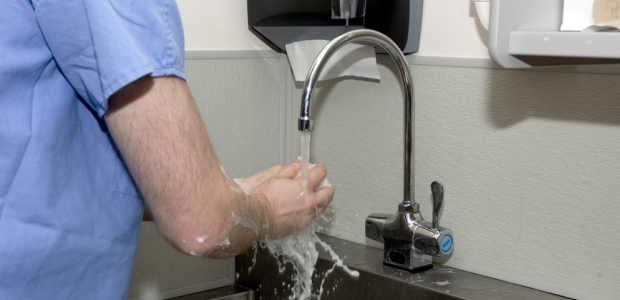
CDC Warns Antibiotic Resistance a Major Threat
The agency's new report lists four core actions it says must be taken to prevent the spread of infections. Meanwhile, the U.S. Senate HELP Committee has set a Sept. 24 hearing on ways to reduce health care-associated infections.
A new report from CDC categorizes the threat posed by antibiotic-resistant infections, stating that more than 2 million people in the United States get them each year and at least 23,000 die annually. The report, "Antibiotic Resistance Threats in the United States, 2013," calls this an urgent health threat for the country.
The loss of effective antibiotic treatments will not only cripple the ability to fight routine infectious diseases, but also will undermine treatment of infectious complications in patients with other diseases, according to CDC. The report says the use of antibiotics is the most important factor leading to antibiotic resistance, with as much as half of all antibiotic use in humans and much of antibiotic use in animals "unnecessary or inappropriate."
The report identifies four core actions that it says must be taken:
- Preventing Infections, Preventing the Spread of Resistance: Avoiding infections in the first place reduces the amount of antibiotics that have to be used and reduces the likelihood resistance will develop during therapy.Tracking: CDC gathers data on antibiotic-resistant infections, causes of infections, and whether there are particular reasons (risk factors) that caused some people to get a resistant infection.
- Improving Antibiotic Use/Stewardship: Perhaps the single most-important action needed to greatly slow the development and spread of antibiotic-resistant infections is to change the way antibiotics are used.
- Development of Drugs and Diagnostic Tests: Because antibiotic resistance occurs as part of a natural process in which bacteria evolve, we will always need new antibiotics to keep up with resistant bacteria, as well as new diagnostic tests to track the development of resistance.
Meanwhile, top officials from CDC and the Center for Medicare and Medicaid Innovation are scheduled to testify Sept. 24 at a hearing U.S. Senate Health, Education, Labor, and Pensions Committee hearing about efforts to reduce health care-associated infections, including sepsis. Patrick Conway, MD, MSc , Chief Medical Officer and Director, Center for Clinical Standards and Quality, and Acting Director, Center for Medicare and Medicaid Innovation, Baltimore, Md.; Beth Bell, MD, MPH , Director, National Center for Emerging and Zoonotic Infectious Diseases, Centers for Disease Control and Prevention, Atlanta; and Ciaran Staunton of the Rory Staunton Foundation, New York, N.Y., are the scheduled witnesses.
"No one should leave a hospital sicker than when they came in," HELP Chairman Sen. Tom Harkin, D-Iowa, said when he announced the hearing Sept. 13. "We know that many health care-associated infections are preventable and easily treatable, given that our medical professionals have the right education and training about symptoms and warning signs. Hundreds of thousands of Americans contract sepsis infections each year—so we must take bold steps to prevent these needless illnesses and deaths. I look forward to exploring these issues when the HELP Committee convenes later this month to discuss efforts to reduce health care-associated infections and improve patient safety overall."
Ciaran Staunton is the father of Rory Staunton, who died at age 12 in 2012 from sepsis caused by a cut from a fall in the gym at his school. The Rory Staunton Foundation seeks to reduce the number of death from sepsis through education and outreach aimed at faster diagnosis and effective treatment of sepsis, particularly in children.
The hearing will be webcast live at http://help.senate.gov.